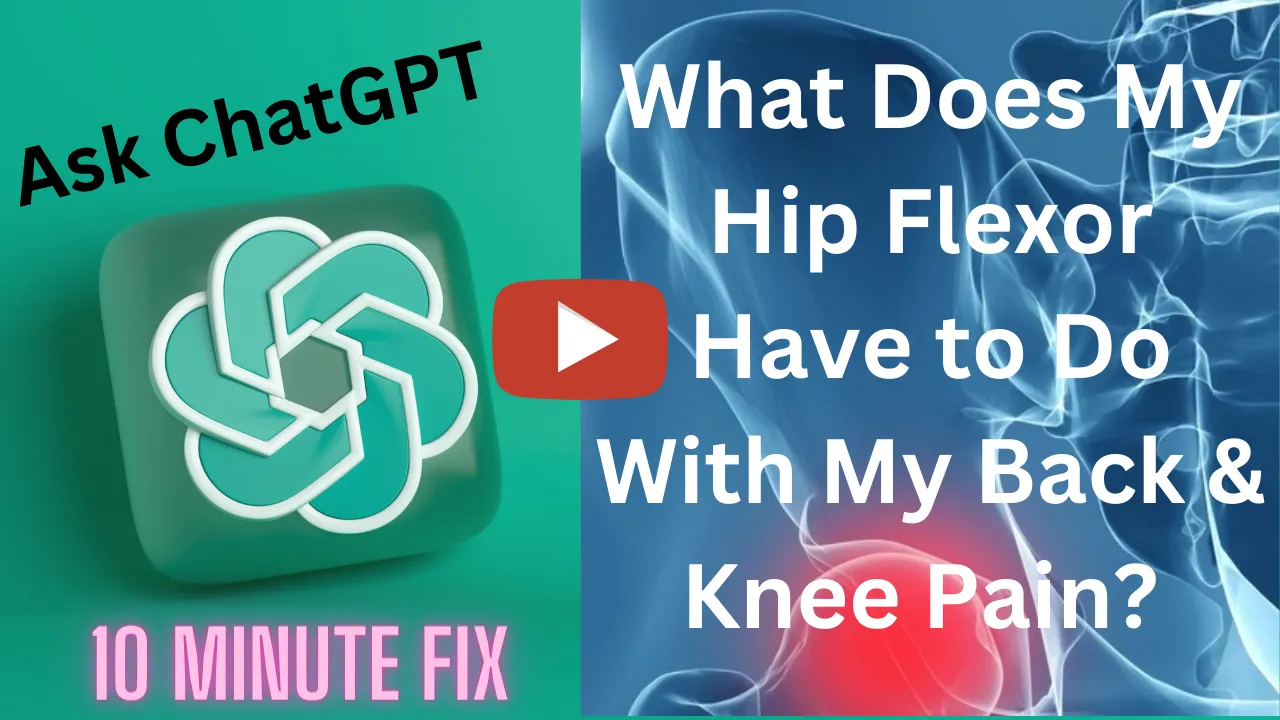10 Minute Fix to Help Get Rid of
Back & Knee Pain

We asked ChatGPT this question and here's what it told us:
When you sit for extended periods, such as during long work hours or while engaging in sedentary activities, your hip flexor muscles can become tight and shortened. The hip flexors are a group of muscles located at the front of the hip joint, including the psoas major, iliacus, and rectus femoris. These muscles play a crucial role in hip flexion, which is the movement of bringing your thigh toward your abdomen.
When the hip flexors are constantly in a shortened position due to prolonged sitting, they can become tight and contracted. This tightness can cause several issues that contribute to pain and inflammation in different areas of the body:
Lower Back Pain: Tight hip flexors can pull on the pelvis, causing an anterior pelvic tilt. This misalignment can increase stress on the lower back and lead to chronic pain and discomfort.
Knee Pain: Tight hip flexors can affect the alignment and mechanics of the lower extremities, potentially leading to issues such as patellofemoral pain syndrome (pain around the kneecap) or iliotibial band syndrome (inflammation of the IT band that runs along the outside of the thigh).
Poor Posture: Tight hip flexors can alter your posture, tilting your pelvis forward and causing excessive curvature in the lumbar spine. This can result in an increased risk of developing conditions like lordosis (excessive inward curvature of the lower back) and contribute to back pain.
Hip Joint Pain: When the hip flexor muscles are chronically tight, they can restrict the range of motion in the hip joint. This limitation can lead to increased pressure and stress on the hip joint, causing pain and discomfort.
Inflammation: Chronic muscle tightness and imbalance due to blocked hip flexors can contribute to increased inflammation in surrounding tissues, including muscles, tendons, and ligaments. This inflammation can further exacerbate pain and discomfort in various areas.
Copyright 2022. All rights reserved.
This site is not a part of Google, Inc. or Google.com, nor is it sponsored or endorsed by Google. YouTube is a trademark of Google, Inc.
Disclaimer: This site is provided for educational purposes only.
Please consult a health professional before implementing any strategy discussed on this website.